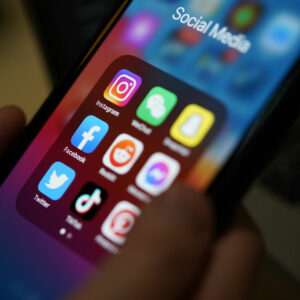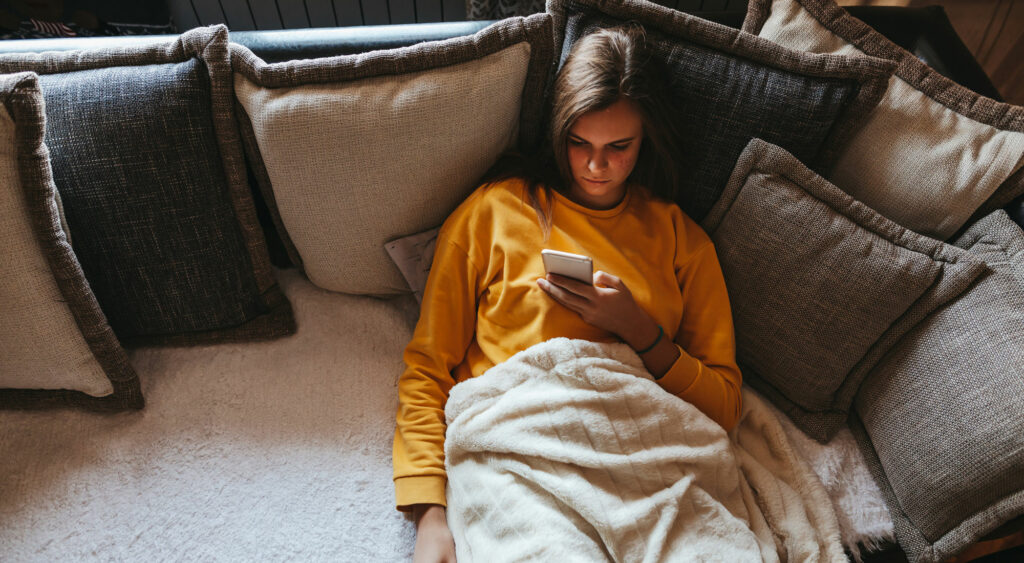By Mandy Parsons
Beauty may be hard to define, but we feel like we know it when we see it. I think we can agree that it’s subjective, as we all find different qualities personally pleasing or attractive. But if beauty truly is in the eye of the beholder, then it exists all around us. So why then does society not embrace beauty in all its forms?
Culture has always influenced public ideas about beauty, as well as beauty standards. For example, in some cultures, a thin frame or fair complexion is considered more desirable, while other cultures promote curvy figures and tanned skin.
Who or what dictates these cultural expectations? Unfortunately, in 21st-century America, the media plays a significant role in shaping our ideas about beauty. And the rise of social media over recent years has had a profound impact on body image.
How does media exposure affect the way we think about ourselves? What should we know about these harmful influences, and how can we work toward fostering a healthy body image?
How the Media Influences Body Image
Every single body we view can shape how we perceive our own bodies.
From movies and TV shows, to magazines, books, and more: Every single body we view can shape how we perceive our own bodies. This becomes particularly concerning when the bodies we see glorified by media outlets are perceived as superior to our own.
Social comparison is a process by which individuals compare themselves either upward or downward to others. The extent to which women engage in this process can indicate how likely they are to be impacted by media images.
Those who are prone to social comparison may strive to achieve with their own bodies what they see as the “ideal” form on screens and in print. Medium blogger Shelby Smith explores this phenomenon as it relates to actors who star in superhero films. Viewers frequently desire to imitate a particular body type portrayed by their favorite actor without knowing the unrealistic and often dangerous methods used to achieve that look.
“The public needs to understand the difference between having a healthy lifestyle and extreme diets for a specific body,” writes Smith. Hours at the gym, high-protein diets, and calorie reducing can cause serious health problems when unsupervised.
Similarly, increased social media exposure has proved detrimental to our body image as well. Statista.com reports people spend more than two hours and 20 minutes a day on social media platforms worldwide.

Consequently, the International Journal of Environmental Research and Public Health confirms that use of social networking sites represents “a risk factor for body image dissatisfaction and associated eating disorders.”
This is especially true for teen girls on social media when social comparison and unattainable beauty standards produce body shame, low self-esteem, body dysmorphia, and depression — all known eating disorder triggers.
Tricks of the Trade
As we learned the hard way with glossy magazines, what you see isn’t always what you get, and media images are often misleading. Furthermore, image editing has come a long way since basic retouching and airbrushing.
Nowadays, you can easily edit photos to your liking by using simple FaceTune “fixes” and TikTok filters, says the Cleveland Clinic. These, along with nearly undetectable AI tools, can completely change your features or “warp the size and shape of your body.”
Capturing the “perfect” selfie has become an art form that fuels self-preoccupation and anxiety. But our obsession with others’ photos — those we aspire to be like — is equally damaging. Coincidentally, many of the viral images we admire are not even real.
Computer-generated content is currently a hot trend among media circles, causing much discussion about the problem with fake and Deepfake images and the growing mistrust of media. “If any image can be manufactured — and manipulated — how can we believe anything we see?” asks The New York Times contributors Tiffany Hsu and Steven Lee Myers.
For this reason, and countless others, we must consume media with caution. The National Eating Disorders Association even offers tips for becoming a critical media consumer in an effort to educate individuals on the dangers of media messaging.
Building a Healthy Body Image
According to research published by the American Psychological Association, teens and young adults who reduced social media use by 50% saw significant improvement in how they felt about their appearance.
Limiting social media and practicing discernment about the types of media you consume is an important step toward building a healthy body image. Also, consider the following ideas on how to improve your body image:
- Make a list of your positive attributes, skills, and talents to help you appreciate your whole self
- Focus on valuing and respecting what your body can do
- Set health-focused goals centered around a non-diet approach
- Avoid comparing yourself to others; instead, recognize what makes you special
- Remember that many media images are manipulated or generated
- Understand that weight loss is not the answer; issues of self-worth run deeper than a number on a scale
Ultimately, seeking professional help to address the root cause of your struggle is the most effective treatment.
We Are Here to Help
For many of us, embracing body positivity is a daunting task. It takes time, intentional effort, and a lot of support. Fortunately, The Meadows Ranch is uniquely equipped to help those suffering from body image issues due to negative media influence or any number of reasons.
We not only treat eating disorders but also other co-occurring mental health conditions, and our treatment plans are whole-person oriented, individualized, and comprehensive in their approach.
Receive the help you need to begin your recovery journey. Healing is just a call, chat, or email away.

